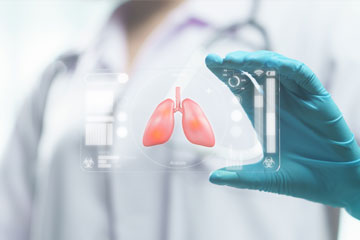
Chronic Obstructive Pulmonary Disease or COPD is a chronic inflammatory lung disease that causes obstruction of airflow from the lungs. According to the Centers for Disease Control and Prevention (CDC), about 15.7 million Americans report being diagnosed with COPD and millions are living with the disease without being diagnosed.
November is observed as National COPD Awareness Month by the COPD Foundation. The awareness theme for this year is “Lace-Up for Lungs: Let’s Outpace COPD”. The COPD Foundation is dedicated to innovative approaches to raise awareness for COPD and encouraging early diagnosis.
COPD is generally classified into two conditions – emphysema and chronic bronchitis.
- Emphysema: This is a condition when the small air sacs (alveoli) and small airways of the lungs (bronchioles) suffer damage. This is due to the overexposure to cigarette smoking and other irritating gases.
- Chronic Bronchitis: This is long-term inflammation of the breathing tubes (bronchi) that carry air to the air sacs of the lungs.
Both these conditions usually occur together. However, the severity may differ on an individual basis. COPD is categorized according to severity as follows:
Stage 1: Mild COPD
People in this stage experience only a mild difficulty in airflow. Some people experience coughing with sputum. People in this stage may not be aware that they have mild COPD.
Stage 2: Moderate COPD
This condition is characterized by feel shortness of breath especially after exercise. The airflow to the lungs might get worse at this stage of COPD. Most people seek medical help in this stage.
Stage 3: Severe COPD
In this stage, the condition worsens from that in stage 2. There may be greater difficulty in breathing, decreasing the tolerance level when performing workouts.
Stage 4: Very Severe COPD
In this stage, the limitation of airflow increases, greatly reducing quality of life. As time passes, the symptoms get worse and the condition becomes life threatening.
Though this condition is incurable, early detection can help control it to a certain extent and also prevent it from turning life threatening. Recognizing symptoms is crucial for early detection and treatment.
The symptoms of COPD include:
- Difficulty in breathing
- Wheezing
- Tightness in the chest
- Cough
- Excessive mucus, especially in the morning
- Frequently occurring respiratory infection
- Low energy level
- Unexplained weight loss
COPD is a progressive disease that gets worse over time, but it is treatable. Proper management of the condition can ease symptoms, prevent complications, help slow disease progression, and improve quality of life.